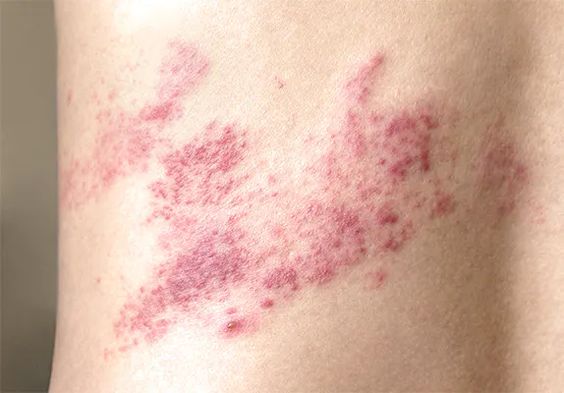In a landmark move, the American Psychological Association (APA) has put forth a set of guidelines to shape the social media habits of adolescents. The recommendations, made public on Tuesday, target teenagers as well as their parents, educators, and policy makers.
This initiative emerges against the backdrop of increased levels of depression, anxiety, and loneliness among teenagers, conditions which mounting evidence suggests may be amplified or even induced by social media use.
Dr. Arthur Evans, APA's CEO, acknowledged the nation's current struggle to handle the impact of social media. The APA's report aims to equip people with the most recent scientific insights to effectively guide young ones and shape social media policies.
The report offers 10 steps, based on the latest scientific research, for parents to follow to ensure healthy social media use by their children. These include close scrutiny of teenagers' social media activities and educating them about digital media literacy prior to their engagement with these platforms.
However, several therapists and clinicians express concern that these guidelines place an undue responsibility on parents. They argue that the successful execution of these recommendations would need the active participation of technology companies and perhaps even regulatory authorities.
Robert Keane, a psychologist at Walden Behavioral Care, which specializes in helping teenagers with eating disorders, points out the limited capacity of parents to manage this situation. He emphasizes that families require additional support.
The APA promotes the idea that while social media can serve as a tool for connectivity, especially during social isolation, adolescents should be regularly checked for signs of "unhealthy social media usage."
Dr. Evans suggests that parents should monitor for signs of problematic social media use, such as it interfering with their child's sleep, physical activity, schoolwork, or other developmental activities. Parents should also watch for difficulties in their child detaching from social media or lying to use it.
The APA advises parents to keep a close eye on their children's social media activities during early adolescence (around 10-14 years). They should aim to limit or eliminate exposure to harmful content, such as posts promoting suicide, self-harm, disordered eating, racism, and bullying. The APA warns that this type of content can potentially encourage similar behaviors in some young people.
Surprisingly, this harmful content appears more often in children's feeds than parents might expect. Recent research revealed that 40% of teenage girls encounter harmful content related to suicide monthly on Instagram and TikTok. Approximately a third report seeing content associated with eating disorders monthly on Instagram, TikTok, Snapchat, and YouTube.
The APA also recommends minimizing the use of social media for comparison, especially concerning beauty and appearance. Studies indicate that frequent comparison with others' appearances online is associated with negative body image and depressive symptoms, particularly among girls.
While children should gain more privacy and autonomy in their social media use as they age, the APA emphasizes maintaining open conversations about their online activities. Parents should also be aware of their own social media habits, as adult attitudes and behaviors can influence young people.
However, some psychologists argue that the guidance lacks practical, actionable advice. Questions such as where parents can find social media training for their child remain unanswered.
Keane argues that this challenge is unlike teaching your child to drive. It's a new arena for many parents and children,
with the younger generation often having more advanced knowledge about these digital platforms. Monitoring an app that your child has a better understanding of can be a daunting task, he stresses.
Keane and his colleagues believe that harmful content should not be present in children's feeds to begin with. Implementing these recommendations would require cooperation with major technology companies and potentially even legislative intervention, asserts Kameron Mendes, a colleague of Keane's at Walden Behavioral Care. Mendes believes that while the APA's guidelines are a commendable beginning, there's still much progress needed before substantial change can occur.
The APA's report does contain suggestions that could be incorporated by policy makers in their quest to regulate the digital industry. For example, it proposes the development of "reporting structures" to identify and remove or downplay social media content showcasing "illegal or psychologically maladaptive behavior," such as self-harm, harming others, and disordered eating.
Moreover, the report highlights the potential necessity of modifying the design of social media platforms to accommodate "youths' development capabilities." This includes features like endless scrolling and recommended content. It further suggests that teenagers should be repeatedly and explicitly warned about how their personal data could be stored, shared, and used.
Emma Lembke, a 19-year-old who started LogOFF, an initiative to help teenagers manage their social media usage and reconnect with their offline lives, stresses that teenagers should be included in the process of making these recommendations or creating social media trainings.
Q&A Section:
Q: What are the new guidelines issued by the American Psychological Association (APA) for teenage social media use?
A: The APA guidelines suggest close monitoring of teenagers' social media activities, educating them about digital media literacy, limiting exposure to harmful content, and minimizing the use of social media for comparison, especially concerning beauty and appearance. The guidelines also stress the importance of open conversations about online activities and parental self-awareness of their own social media habits.
Q: What signs of problematic social media use should parents look out for in their children, according to APA guidelines?
A: Parents should be vigilant if social media use interferes with their child's sleep, physical activity, schoolwork, or other developmental activities. Difficulty detaching from social media or lying to use it are other signs of problematic use.
Q: What role do technology companies and regulatory authorities play in implementing the APA's guidelines on teenage social media use?
A: Technology companies and regulatory authorities are key in implementing the APA's guidelines. The APA suggests that these guidelines can be incorporated by policy makers in their quest to regulate the digital industry and proposes collaboration with technology companies to develop reporting structures to identify and remove harmful content.
Q: What harmful content should parents aim to limit or eliminate from their children's social media feed, according to APA guidelines?
A: Parents should aim to limit or eliminate exposure to harmful content, such as posts promoting suicide, self-harm, disordered eating, racism, and bullying. This type of content can potentially encourage similar behaviors in some young people.










